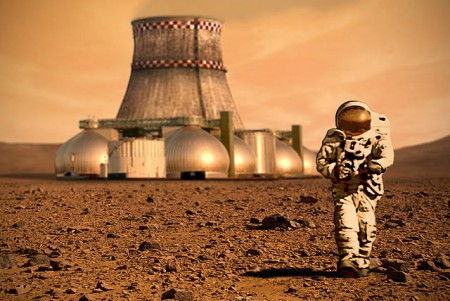Have you ever imagined how it would be like to live on Mars or on another planet? In 2023 we will be able to stop imagining and start watching, because Bas Lansdorp and Arno Wielders, the founders of Mars One will send the first batch of four astronauts to Mars. Thus, Dr. Wagner & Partner teamed up and asked “What would a workspace on Mars look like?”.
After combining our expertise in the creation of optimal workspaces for startups, SMEs and large corporations with research regarding Artificial Closed Ecological Systems (CES), we were able to create a controversial hypothesis. In order to keep you on tenterhooks for a little longer, we will briefly present you the Mars One mission and some background information about the “working” -environment on the 34 million miles distant planet.
Mars One – Introcution (Source: Mars One – Youtube)
Mars One – the adventure of the century, is currently selecting the first four Martian-settlers who will never return to earth. Besides this, they are developing the necessary technology to provide a permanent, stable Artificial Closed Ecological System for the settlement. This settlement will not be completely closed, because it will be possible to send new supplies or parts every two years in a short window of time.
People who wish to go to Mars (Source: The Guardian – YouTube)
Mars is a completely hostile environment for humans and looks like a – 100° Celsius cold version of the Southern Californian Mojave Desert. Mars’ atmosphere contains no oxygen but mainly carbon dioxide. Due to Mars’ solidified iron core it has lost its magnetic field and is stricken by solar winds. Even though some researchers hypothesise that there must have been or should still be water on Mars, it could not prevail on its surface in its liquid form, because it would evaporate and freeze at the same time. Adding to this, potential settlers would have to cope with weeks, even months of darkness.
So why bother to go there?
• From all planets we know so far, Mars is the most likely candidate for future human settlement
• Some researchers believe that Mars could hold the keys to our past and future, because they hope to find the answer of life in potential ice layers or Martian permafrost
• The analysis of a Martian meteorite ALH84001, which was conducted by four independent lines of research and headed by David McKay from the Johnson Space Centre, stated that the rock sample might contain biologic sediments
It has to be emphasised that there are as many advocates as critics regarding the theories about Mars and the possibility that there has been or still is a form of life.
A workspace on Mars is a totally different category and not comparable to anything we have on earth. The most similar workspace could be found on the International Space Station (ISS) or within Artificial Closed Ecological Systems (CES) such as Biosphere 2 or BIOS 3. These workspaces are a mixture of research laboratory, living area and food production facility. Here is a concept draft for the settlement of the Mars One project.
Since the settlers on Mars will remain there till they die, social friction within the crew or stress are likely. Thus, it is of utmost importance to create a workspace which does not only provide functionality but a minimum level of cosiness. The next two pictures where taken from the video ‘The Mars 100‘. They show not only a conceptual living space, but a food production facility.

It becomes obvious that the workspace on Mars has to be a balanced mixture between productive working, living and agricultural environment.
Furthermore, the not entirely closed system must be able to remain stable without supplies for longer than two years, because it could be that external factors inhibit a mission in the short window of time every two years. Due to this fact the Mars One Artificial Closed Ecological Systems has to cope with the following stability limits.
• The slowest circulating biogeochemical cycle in the system
• Buffer capability of the system regarding internal or external factors
• Natural structure and intensity of material turnover
This means that each material brought into the Mars One settlement has influence on the closed system. Since the settlement has limited space, the buffer capacity to neutralise certain disruptions is very limited and highly dependent on the stabilising factor of the human crew. In order to minimise the likelihood for instability it is important to exclude all materials with a deviating material cycle and to use materials that maximise productivity. With regards to constant food production, innovative vertical farming solutions by startups like Agrilution, which will be able to operate in closed systems, could help to realise the ambitious goal of the Mars One mission.
So far all experiments for a permanently stable Artificial Closed Ecological Systems (CES) such as Biosphere 2, BIOS 3, CEEF or MELiSSA failed because of the high level of complexity. So far academia has not been successful in mimicking an earth-like biosphere in a limited space. Thus, Dr. Wagner & Partner hypothesise that the Mars One mission is likely to postpone the departure till the first constantly stable Artificial Closed Ecological System is developed.
